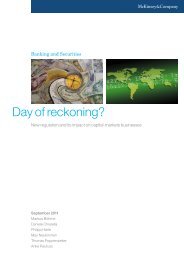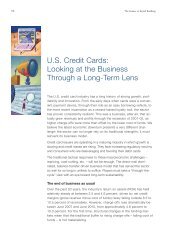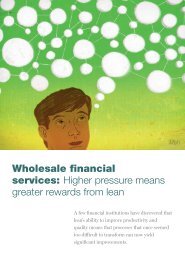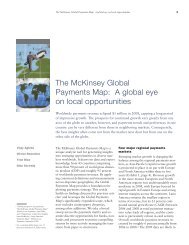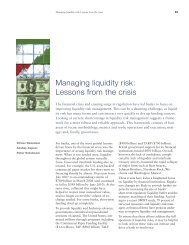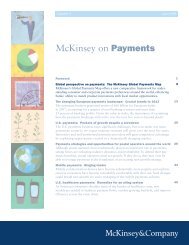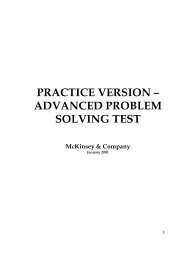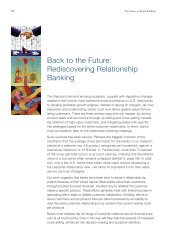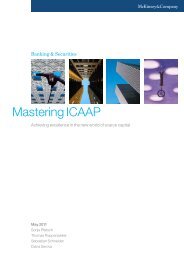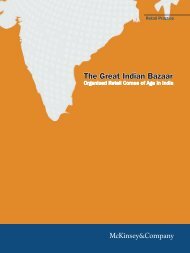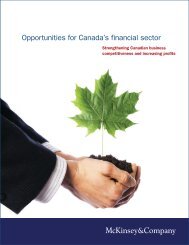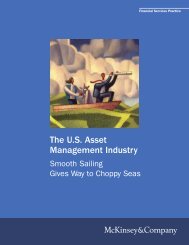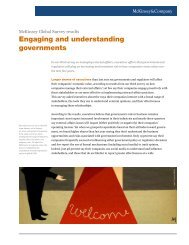Charting Our Water Future - McKinsey & Company
Charting Our Water Future - McKinsey & Company
Charting Our Water Future - McKinsey & Company
- No tags were found...
You also want an ePaper? Increase the reach of your titles
YUMPU automatically turns print PDFs into web optimized ePapers that Google loves.
22 Executive Summary4. Putting solutions into practice:New dialogue among stakeholdersKnowing the least-cost portfolio of technical solutions that will close a country’s“base-case” water gap is a significant step forward. On the way towards real changehowever, the technical options of new supply or better efficiency must be compared to additionaloptions to shift the set of underlying economic activities away from the most water-intensiveones, recognizing that growth in energy, agriculture, and manufacturing have real implicationsfor the water budgets of river basins and countries. The reverse is also true: planning for watermust be integrative with directions of the whole economy, whether explicitly constrained bywater considerations or not. Using an iterative process, governments and other key stakeholdersin a given country can create a matrix of options from which to chart pathways of developmentthat balance water supply and demand.The tools developed in this report, including the cost curve and gap models, can help providecritical insights for those engaged in transforming a national water agenda. In such atransformation effort, the first step in applying these tools is to construct a set of future scenariosthat represent relevant choices facing the country—these might include, for example, the waterdemand implications of rapid agricultural development; or those of reduced water availabilitya result of climate change. A scenario approach is chosen because it allows decision-makersto separate the problem of choosing an appropriate mix of economic activities, something thatcan only partly be planned and that is subject to large number of economic considerations, fromensuring that those economic activities are sustainable. For each scenario, a cost curve can thenbe constructed. Each cost curve can be used to define a set of technical solutions—a solutionmix—such as the least-cost set of solutions, or the infrastructure-only set of solutions. A full suiteof options, with the water costs associated with them, is therefore laid out for decision-makers tocompare and discuss (Exhibit VI).In choosing scenarios, and to some extent the technical measures to close the gap projected underany one of those scenarios, the trade-offs decision makers will face go well beyond the issue ofwater: they will need to consider everything from the impacts on growth and jobs (includinggeographic distribution), to the implications for trade and geopolitics. A decision cannot be<strong>Charting</strong> <strong>Our</strong> <strong>Water</strong> <strong>Future</strong>



